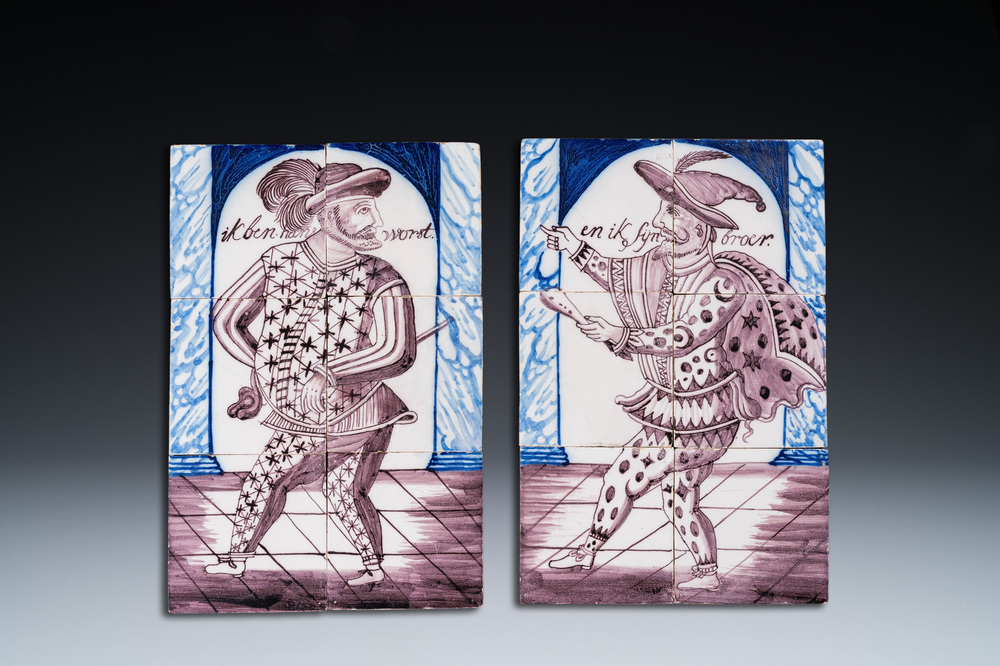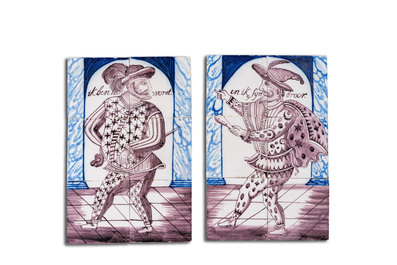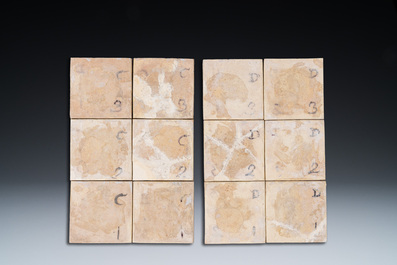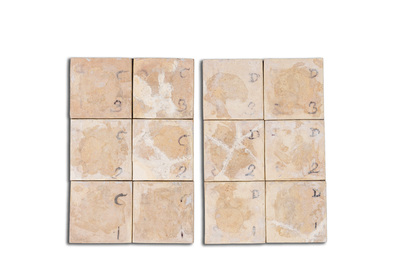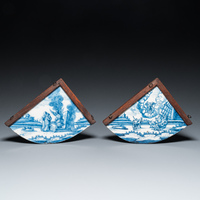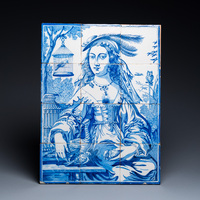We moeten verifiëren dat uw registratie niet om een geautomatiseerde ingave in ons systeem gaat. Vervolledig aub de onderstaande test...
Een uitzonderlijk paar tegeltableaus met 'Hans Worst' en zijn broer in blauw-wit en mangaan, wellicht Rotterdam, 18e eeuw
Dim.: 39 x 26 cm (each mural)
Dim.: 13 x 13 cm (each tile)
Condition:
- 'Ik ben Hans Worst': The two top right tiles have been broken and restored.
- 'En ik zijn broer.': The middle left and bottom right tiles have been broken and restored.
- The restoration is executed to the highest standard and left visible on the back.
Ref.:
- The current pair is illustrated and discussed in Antiek, no. 2, Aug/Sept 1987, p. 95.
- A similar single illustrated example, painted in manganese, is published in A. Hoynck van Papendrecht, De Rotterdamse plateelbakkers enz., Rotterdam, 1920, p. 117, fig. 229.
- Another example but painted in blue and with a frieze is illustrated and discussed by D.F. Lunsingh Scheurleer in Antiek no. 2 Aug/Sept 1986. This piece is now in the collection of the Brussel Koninklijk Museum voor Kunst en Geschiedenis.
- Jan Pluis, The Dutch Tile, p. 601, E.03.06.02, for a related mural showing an actor, described as from Rotterdam.
Hans Worst is the Dutch version of Hanswurst or Hans Wurst, a popular character from the early 18th C.
The name first appeared in a Middle Low German version of Sebastian Brant's 'Ship of Fools' (1494) (using the name Hans myst). 'Hanswurst' was also a mockery and insult. Martin Luther used it in his 1541 pamphlet Wider Hans Worst (Against Hanswurst), when he railed against the catholic Duke Henry of Brunswick.
In 1712, Joseph Anton Stranitzky developed and popularized the role of Hanswurst.
The theater historian Otto Rommel saw this as the beginning of the so-called Viennese popular theater. Stranitzky's Hanswurst wore the garb of a peasant from Salzburg, with a wide-brimmed hat on.
His humor was often sexual and scatological. The character found numerous imitators.
In 1775, the 26-year-old Johann Wolfgang von Goethe wrote a farce entitled Hanswurst's Wedding.
